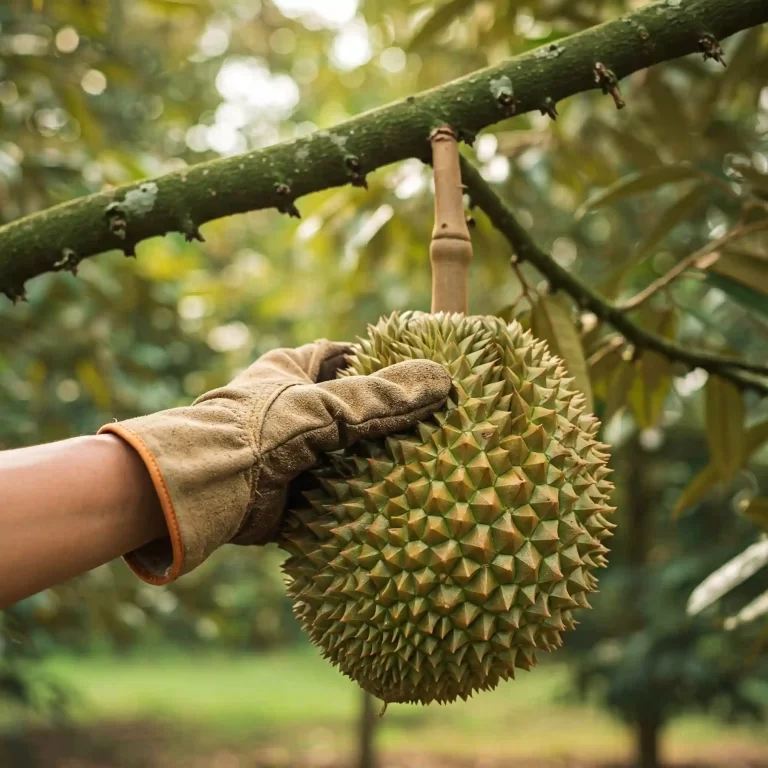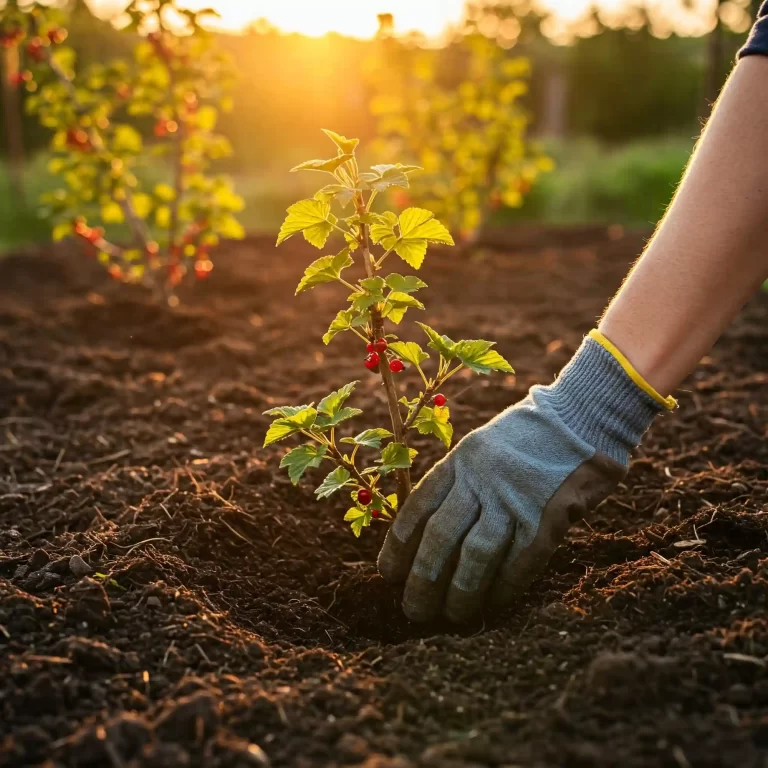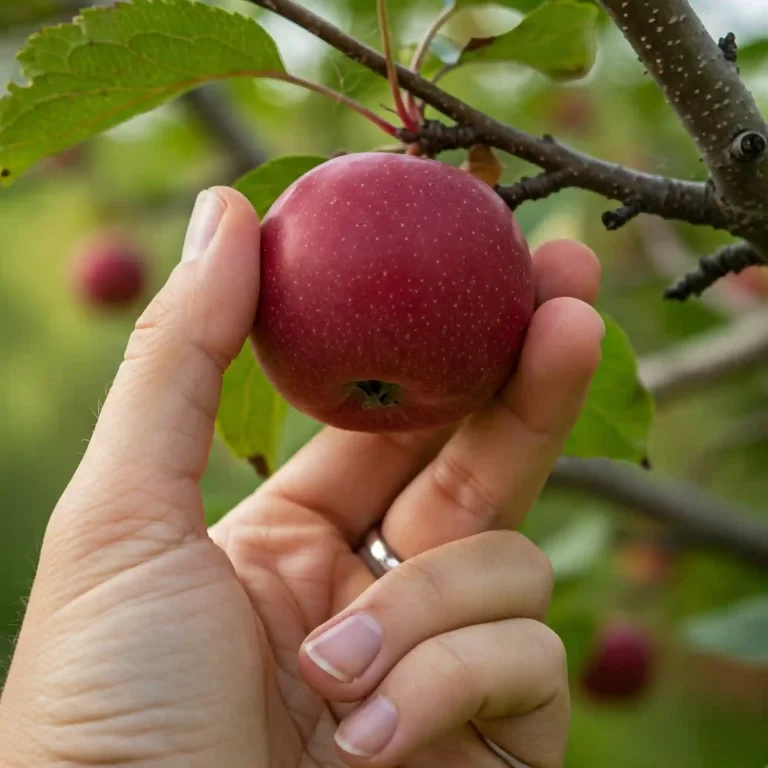Weeds are the bane of every gardener’s existence. They steal nutrients, water, and sunlight from your beloved plants, making it difficult to maintain a healthy and beautiful garden.
Despite your best efforts, these pesky invaders seem to pop up overnight, turning your garden into a battleground. The constant bending, pulling, and digging can be exhausting, especially if you have a busy schedule and limited time to dedicate to weeding.
Fortunately, the right weeder can make all the difference. In this comprehensive guide, we’ll explore the best weeders available, how to choose the right one for your garden, and tips for using them effectively. Whether you’re a seasoned gardener or just starting out, this guide will help you keep your garden weed-free with minimal effort.
What Are Weeders and Why Are They Important?
Weeders are essential tools for any gardener, designed specifically to remove unwanted plants from your garden. These tools come in various shapes and sizes, each tailored to different types of weeds and gardening needs. Understanding the importance of weeders and how they can benefit your garden is the first step towards maintaining a healthy and thriving garden.
Definition of Weeders
A weeder is a gardening tool used to remove weeds from the soil. Weeds are unwanted plants that compete with your garden plants for nutrients, water, and sunlight. Weeders are designed to make the process of removing these invaders easier and more efficient, reducing the physical strain on the gardener.
Importance of Weeders in Garden Maintenance
Weeders play a crucial role in garden maintenance for several reasons:
- Nutrient Competition: Weeds compete with your garden plants for essential nutrients in the soil. By removing weeds, you ensure that your plants receive the nutrients they need to grow strong and healthy.
- Water Competition: Weeds also compete for water, which can be especially problematic during dry periods. Removing weeds helps to conserve water for your garden plants.
- Sunlight Competition: Weeds can overshadow your garden plants, blocking sunlight and hindering their growth. Keeping your garden weed-free ensures that your plants receive adequate sunlight.
- Aesthetic Appeal: A garden overrun with weeds can look untidy and neglected. Regular weeding helps to maintain the aesthetic appeal of your garden, making it a more enjoyable space.
- Disease Prevention: Weeds can harbor pests and diseases that can spread to your garden plants. Removing weeds reduces the risk of pest infestations and plant diseases.
Benefits of Using Weeders Over Manual Weeding
While manual weeding (pulling weeds by hand) is an option, using a weeder offers several advantages:
- Efficiency: Weeders are designed to make the process of removing weeds quicker and more efficient. They can penetrate the soil and remove weeds at the root, reducing the likelihood of regrowth.
- Reduced Physical Strain: Weeding by hand can be physically demanding, especially for larger gardens. Weeders are designed to reduce the strain on your back, knees, and hands, making the task more comfortable.
- Precision: Weeders allow for more precise removal of weeds, minimizing damage to your garden plants. This is particularly important for delicate plants and densely planted areas.
- Versatility: There are different types of weeders available, each suited to different types of weeds and gardening needs. This versatility allows you to choose the right tool for the job, making weeding more effective.
- Time-Saving: Using a weeder can save you time, allowing you to spend more time enjoying your garden and less time battling weeds.
Types of Weeders
There are several types of weeders available, each designed for specific gardening needs. Understanding the different types of weeders and their uses can help you choose the right tool for your garden.
Hand Weeders
Description: Hand weeders are small, handheld tools designed for precise weeding in small garden areas. They typically have a forked end or a narrow blade for digging out weeds.
Best For: Small gardens, flower beds, and areas with delicate plants.
Advantages:
- Precise removal of weeds.
- Easy to use and control.
- Ideal for small, tight spaces.
Disadvantages:
- Requires bending and kneeling.
- Not suitable for large areas.
Popular Models:
- CobraHead Original Garden Hand Weeding Tool
- Fiskars 200S Weeder Garden Hand Tool
Stand-Up Weeders
Description: Stand-up weeders are designed to be used while standing, reducing the need for bending and kneeling. They typically have a long handle and a mechanism for gripping and pulling weeds.
Best For: Larger garden areas, lawns, and gardeners with back or knee issues.
Advantages:
- Reduces physical strain.
- Suitable for larger areas.
- Easy to use.
Disadvantages:
- May not be as precise as hand weeders.
- Can be bulky to store.
Popular Models:
- Fiskars Deluxe Stand-Up Weeder
- Walensee Weed Puller
Electric Weeders
Description: Electric weeders use heat or electricity to kill weeds. They are typically powered by electricity and are designed for quick and efficient weeding.
Best For: Large garden areas, driveways, and pathways.
Advantages:
- Quick and efficient.
- No need for bending or kneeling.
- Can cover large areas.
Disadvantages:
- Requires a power source.
- May not be suitable for delicate plants.
Popular Models:
- Wagner Spraytech Electric Weeder
- Bernzomatic Lawn and Garden Torch
Gas-Powered Weeders
Description: Gas-powered weeders use a flame to kill weeds. They are typically powered by propane and are designed for heavy-duty weeding tasks.
Best For: Large garden areas, driveways, and pathways.
Advantages:
- Powerful and effective.
- Can cover large areas.
- No need for bending or kneeling.
Disadvantages:
- Requires a propane tank.
- May not be suitable for delicate plants.
- Can be dangerous if not used properly.
Popular Models:
- Red Dragon Propane Torch Kit
- Flame Engineering Weed Dragon
How to Choose the Right Weeder for Your Garden
Choosing the right weeder for your garden depends on several factors, including the size of your garden, the types of weeds you need to remove, and your personal comfort. Here are some tips to help you make the right choice:
Factors to Consider
- Garden Size: The size of your garden will determine the type of weeder you need. For small gardens, a hand weeder may be sufficient. For larger gardens, a stand-up, electric, or gas-powered weeder may be more suitable.
- Weed Types: Different types of weeds require different types of weeders. For example, deep-rooted weeds may require a weeder with a long, narrow blade, while surface weeds can be removed with a hoe weeder.
- Personal Comfort: Consider your physical comfort when choosing a weeder. If you have back or knee issues, a stand-up weeder may be more comfortable to use. If you prefer a lightweight tool, a hand weeder may be the best choice.
- Durability: Look for a weeder made from durable materials, such as steel or carbon steel. A durable weeder will last longer and provide better performance.
- Ease of Use: Choose a weeder that is easy to use and control. Consider the weight, handle design, and overall ergonomics of the tool.
Comparison of Different Weeder Types
| Type of Weeder | Best For | Advantages | Disadvantages |
| Hand Weeders | Small gardens, flower beds | Precise removal, easy to use | Requires bending, not suitable for large areas |
| Stand-Up Weeders | Larger gardens, lawns | Reduces physical strain, suitable for large areas | May not be as precise, bulky to store |
| Electric Weeders | Large areas, driveways | Quick and efficient, no bending | Requires power source, not suitable for delicate plants |
| Gas-Powered Weeders | Large areas, driveways | Powerful and effective, no bending | Requires propane tank, can be dangerous |
Tips for Selecting the Best Weeder
- Read Reviews: Look for reviews and ratings from other gardeners to get an idea of the performance and durability of different weeders.
- Try Before You Buy: If possible, try out different weeders to see which one feels most comfortable and effective for you.
- Consider Your Budget: Weeders come in a range of prices. Consider your budget and choose a weeder that offers the best value for your money.
- Look for Warranties: Some weeders come with warranties, which can provide peace of mind and protection against defects.
- Check for Additional Features: Some weeders come with additional features, such as ergonomic handles, adjustable lengths, or built-in weed disposal mechanisms. Consider these features when making your choice.
Top 10 Weeders for Gardeners
Here are detailed reviews of the top 10 weeders for gardeners, based on performance, durability, and user reviews:
- CobraHead Original Garden Hand Weeding Tool
- Description: A versatile hand weeder with a unique blade design for precise weeding.
- Pros: Durable, easy to use, effective for various types of weeds.
- Cons: Requires bending, not suitable for large areas.
- User Reviews: Highly rated for its effectiveness and durability.
- Fiskars Deluxe Stand-Up Weeder
- Description: A stand-up weeder with a long handle and four-claw design for easy weed removal.
- Pros: Reduces physical strain, effective for large areas, durable construction.
- Cons: Bulky to store, may not be as precise for small weeds.
- User Reviews: Praised for its ease of use and effectiveness in removing deep-rooted weeds.
- Walensee Weed Puller
- Description: A stand-up weeder with a three-claw design and foot pedal for easy weed extraction.
- Pros: Ergonomic design, reduces bending, effective for various weed types.
- Cons: Can be heavy, requires some strength to operate.
- User Reviews: Highly rated for its ergonomic design and effectiveness.
- Corona Clipper Weeder
- Description: A hand weeder with a narrow blade for precise weeding.
- Pros: Lightweight, easy to control, durable blade.
- Cons: Requires bending, not suitable for large areas.
- User Reviews: Appreciated for its precision and durability.
- Razor-Back Professional Weeder
- Description: A heavy-duty weeder with a long handle and sharp blade for tough weeds.
- Pros: Durable, effective for tough weeds, reduces bending.
- Cons: Can be heavy, may require strength to use.
- User Reviews: Praised for its durability and effectiveness on tough weeds.
- Musashi Hand Tool Weeder
- Description: A Japanese-style hand weeder with a sharp blade for precise weeding.
- Pros: Precise, lightweight, durable blade.
- Cons: Requires bending, not suitable for large areas.
- User Reviews: Highly rated for its precision and sharpness.
- Fiskars 200S Weeder Garden Hand Tool
- Description: A hand weeder with a narrow blade and ergonomic handle.
- Pros: Comfortable to use, precise, durable.
- Cons: Requires bending, not suitable for large areas.
- User Reviews: Appreciated for its ergonomic design and effectiveness.
- Project Source Hand Tool Weeder
- Description: A budget-friendly hand weeder with a simple design.
- Pros: Affordable, lightweight, easy to use.
- Cons: Requires bending, may not be as durable as other models.
- User Reviews: Praised for its affordability and ease of use.
- Corona ComfortGEL Extendable Weeder
- Description: An extendable weeder with a comfortable grip and sharp blade.
- Pros: Adjustable length, comfortable grip, effective blade.
- Cons: Can be heavy, may require strength to use.
- User Reviews: Highly rated for its adjustable length and comfort.
- Fiskars Deluxe 4 Claw Weeder
- Description: A stand-up weeder with a four-claw design for easy weed removal.
- Pros: Reduces physical strain, effective for large areas, durable construction.
- Cons: Bulky to store, may not be as precise for small weeds.
- User Reviews: Praised for its ease of use and effectiveness in removing deep-rooted weeds.
How to Use a Weeder Effectively
Using a weeder effectively can make the task of removing weeds much easier and more efficient. Here are some tips and techniques for using different types of weeders:
Step-by-Step Guide on Using Different Types of Weeders
- Hand Weeders:
- Step 1: Identify the weed you want to remove.
- Step 2: Insert the forked end or blade of the hand weeder into the soil at the base of the weed.
- Step 3: Push the weeder down to penetrate the soil and reach the weed’s roots.
- Step 4: Gently lever the weeder to lift the weed out of the soil, ensuring you remove the entire root.
- Step 5: Dispose of the weed and fill the hole with soil.
- Stand-Up Weeders:
- Step 1: Position the weeder over the weed you want to remove.
- Step 2: Push the weeder’s claws or blade into the soil at the base of the weed.
- Step 3: Use the foot pedal or handle to activate the weeder’s mechanism and grip the weed.
- Step 4: Pull the weeder back to extract the weed from the soil.
- Step 5: Release the weed from the weeder and dispose of it.
- Electric Weeders:
- Step 1: Plug in the electric weeder and turn it on.
- Step 2: Position the weeder over the weed you want to remove.
- Step 3: Hold the weeder in place for a few seconds to allow the heat or electricity to kill the weed.
- Step 4: Move on to the next weed and repeat the process.
- Step 5: Dispose of any dead weeds and clean the weeder after use.
- Gas-Powered Weeders:
- Step 1: Attach the propane tank to the weeder and turn it on.
- Step 2: Position the weeder over the weed you want to remove.
- Step 3: Hold the weeder in place for a few seconds to allow the flame to kill the weed.
- Step 4: Move on to the next weed and repeat the process.
- Step 5: Dispose of any dead weeds and clean the weeder after use.
Tips for Maximizing Efficiency and Minimizing Effort
- Weed When the Soil is Moist: Weeding is easier when the soil is moist, as the weeds are more likely to come out with their roots intact. Try weeding after a rain or watering your garden before you start.
- Weed Regularly: Regular weeding prevents weeds from becoming established and reduces the overall workload. Aim to weed your garden at least once a week.
- Use the Right Tool for the Job: Choose the appropriate weeder for the type of weeds and the size of your garden. Using the right tool can make the task more efficient and less physically demanding.
- Work in Sections: Divide your garden into sections and focus on one section at a time. This approach makes the task more manageable and ensures that you cover the entire garden.
- Take Breaks: Weeding can be physically demanding, so take regular breaks to rest and hydrate. This will help prevent fatigue and reduce the risk of injury.
Safety Precautions to Take While Using Weeders
- Wear Protective Gear: Wear gloves to protect your hands from blisters and cuts. Consider wearing knee pads if you are using a hand weeder and will be kneeling for extended periods.
- Be Mindful of Your Posture: Maintain good posture while weeding to avoid straining your back and knees. Use a stand-up weeder if you have back or knee issues.
- Follow Manufacturer Instructions: Always read and follow the manufacturer’s instructions for using your weeder. This will ensure that you use the tool safely and effectively.
- Store Weeders Safely: Store your weeders in a safe place, out of reach of children and pets. Keep them clean and dry to prevent rust and damage.
- Be Cautious with Electric and Gas-Powered Weeders: When using electric or gas-powered weeders, be cautious of the power source and flame. Keep flammable materials away and follow safety guidelines to prevent accidents.
Maintenance Tips for Your Weeder
Proper maintenance of your weeder is essential to ensure its longevity and effectiveness. Here are some tips for cleaning, storing, and maintaining your weeder:
How to Clean and Store Your Weeder
- Cleaning:
- After Each Use: Remove any soil and debris from the weeder using a brush or cloth. For stubborn dirt, use a hose to rinse the weeder.
- Deep Cleaning: Periodically, give your weeder a deep clean by soaking it in soapy water and scrubbing it with a brush. Rinse thoroughly and dry completely to prevent rust.
- Storing:
- Dry Storage: Store your weeder in a dry place to prevent rust and corrosion. Consider hanging it on a pegboard or storing it in a tool shed.
- Protective Covers: Use protective covers or cases for your weeders to keep them clean and safe from damage.
Tips for Prolonging the Life of Your Weeder
- Sharpen Blades: Keep the blades of your weeder sharp to ensure effective cutting and digging. Use a sharpening stone or file to maintain the blade’s edge.
- Oil Moving Parts: If your weeder has moving parts, such as a mechanism for gripping weeds, oil them regularly to keep them functioning smoothly.
- Inspect for Damage: Regularly inspect your weeder for any signs of damage, such as cracks or bent parts. Repair or replace damaged parts to maintain the weeder’s effectiveness.
- Avoid Overloading: Do not use your weeder for tasks it is not designed for, such as digging large holes or cutting thick roots. Overloading the weeder can cause damage and reduce its lifespan.
- Follow Manufacturer Guidelines: Adhere to the manufacturer’s maintenance guidelines and recommendations to ensure the best performance and longevity of your weeder.
Common Maintenance Issues and How to Fix Them
- Rust: If your weeder develops rust, use a wire brush or sandpaper to remove it. Apply a rust inhibitor or oil to prevent further rusting.
- Loose Handles: If the handle of your weeder becomes loose, tighten any screws or bolts. If the handle is damaged, consider replacing it.
- Bent Blades: If the blade of your weeder becomes bent, use a hammer or pliers to straighten it. If the blade is severely damaged, it may need to be replaced.
- Clogged Mechanisms: If your weeder’s mechanism becomes clogged with soil or debris, disassemble it (if possible) and clean the parts thoroughly. Reassemble the weeder and ensure it functions smoothly.
Common Mistakes to Avoid When Using Weeders
Using a weeder effectively requires some knowledge and practice. Here are some common mistakes to avoid to ensure you get the best results:
- Overusing or Misusing Weeders:
- Mistake: Using a weeder for tasks it is not designed for, such as digging large holes or cutting thick roots.
- Solution: Use the appropriate tool for each gardening task. Reserve your weeder for removing weeds and use other tools for digging or cutting.
- Not Considering the Type of Weeds:
- Mistake: Using the wrong type of weeder for the weeds you are trying to remove.
- Solution: Identify the type of weeds in your garden and choose a weeder that is best suited for those weeds. For example, use a hand weeder for small, shallow-rooted weeds and a stand-up weeder for larger, deep-rooted weeds.
- Ignoring Safety Precautions:
- Mistake: Failing to wear protective gear or follow safety guidelines when using a weeder.
- Solution: Always wear gloves and other protective gear when weeding. Follow the manufacturer’s safety instructions to prevent accidents and injuries.
- Weeding at the Wrong Time:
- Mistake: Weeding when the soil is dry and hard, making it difficult to remove weeds with their roots intact.
- Solution: Weed when the soil is moist, such as after a rain or watering your garden. This makes it easier to remove weeds completely.
- Not Removing the Entire Root:
- Mistake: Pulling weeds without removing the entire root, leading to regrowth.
- Solution: Use a weeder to dig deep and remove the entire root of the weed. This reduces the likelihood of the weed growing back.
- Overlooking Small Weeds:
- Mistake: Ignoring small weeds, allowing them to grow and spread.
- Solution: Regularly inspect your garden and remove small weeds before they become established. This prevents them from spreading and becoming more difficult to remove.
FAQs About Weeders
Here are some frequently asked questions about weeders, along with detailed answers to help you make the most of your weeding tools:
- How often should I use a weeder?
- Answer: It is recommended to weed your garden at least once a week to prevent weeds from becoming established. Regular weeding helps to keep your garden healthy and reduces the overall workload.
- Can weeders be used on all types of soil?
- Answer: Weeders can be used on most types of soil, but their effectiveness may vary. For example, hand weeders work well in loose, moist soil, while stand-up weeders are better suited for compacted or dry soil. Choose a weeder that is appropriate for your soil type.
- What is the best time of day to weed?
- Answer: The best time to weed is in the early morning or late afternoon when the soil is moist and the temperature is cooler. Weeding during these times is more comfortable and effective.
- Are there any eco-friendly weeder options?
- Answer: Yes, there are eco-friendly weeder options available, such as manual hand weeders and stand-up weeders. These tools do not require electricity or fuel and are safe for the environment. Additionally, using weeders reduces the need for chemical herbicides.
- How do I prevent weeds from growing back?
- Answer: To prevent weeds from growing back, remove the entire root of the weed using a weeder. Mulching your garden can also help to suppress weed growth by blocking sunlight and reducing soil disturbance. Regular weeding and garden maintenance are key to keeping weeds at bay.
Conclusion and Final Tips
Keeping your garden weed-free is essential for maintaining a healthy and beautiful garden. By choosing the right weeder and using it effectively, you can make the task of weeding easier and more efficient. Here are some final tips to help you maintain a weed-free garden:
- Choose the Right Weeder: Select a weeder that is best suited for your garden size, weed types, and personal comfort. Consider factors such as durability, ease of use, and additional features.
- Weed Regularly: Regular weeding prevents weeds from becoming established and reduces the overall workload. Aim to weed your garden at least once a week.
- Use Proper Techniques: Follow the step-by-step guide for using different types of weeders to ensure effective weed removal. Pay attention to safety precautions and maintain good posture to avoid strain and injury.
- Maintain Your Weeder: Proper maintenance of your weeder is essential for its longevity and effectiveness. Clean, store, and inspect your weeder regularly to keep it in good condition.
- Prevent Weed Growth: Use mulching and other weed prevention techniques to reduce the likelihood of weeds growing back. Regular garden maintenance is key to keeping your garden weed-free.
By following these tips and using the information provided in this guide, you can keep your garden weed-free and enjoy a healthy, thriving garden. Happy gardening!




